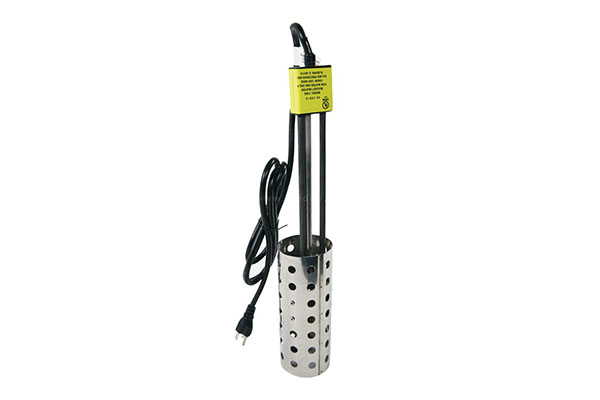In the water damage restoration industry the speed of getting things dry is one of the most important factors. Situations can go from bad to worse in 24 hours or less. In order to efficiently dry water damaged structures, the temperatures in the affected areas need to be maintained at or preferably above 70°. If those temperatures can not be maintained drying slows to unacceptable levels. Restorers need a way to increase temperatures in the affected areas and on the wet surfaces so that drying progresses at a satisfactory rate. To do that, the use of portable heaters is often the best option.
Using portable heaters can drastically speed up that all important drying time. Using portable heat doesn’t have to be because it is cold outside. We all know that warm air will hold more moisture and to dry a structure restorers need to get moisture into the air where dehumidifiers can do their job. It only makes sense that keeping a water-damaged area warmer will make dehumidifiers work more efficiently and aid in drying time
The Science of Using Heat for Drying
Using heat in conjunction with standard drying procedures can often times reduce the number of days needed to complete a structural dry out. This could possibly save having to tear out and replace building materials. This in turn may help return a family’s life back to normal quicker at the same time reducing the cost of insurance claims.
It takes energy to change liquid water into its gaseous state, water vapor. When most people think “heat”, they think of high temperature. Heat and high temperature is not the same thing in restorative drying. Heat is measured in BTUs (British thermal units) while temperature is measured in degrees. It takes one BTU per pint of water to raise the temperature of the water 1°.
Evaporating just one pint of water requires a little over 1,000 BTUs. When temperature alone is raised it doesn’t increase the amount of water in the air, it only makes it possible for the air to hold more water. The key to drying is increasing the surface temperature of the wet materials. Increasing surface temperature increases vapor pressure and vapor pressure is what drives speed of evaporation.
How much heat should be used? We all love this answer, “It depends.” There are no set figures for this question. The amount of heat to be used depends on the conditions surrounding each situation. Things such as weather, the type of construction, and how long things have been wet. The best time to use heat is always at the beginning of the drying but the restorer must keep an eye on dew points to avoid too much condensation from occurring. Also, if drying happens too quickly, the surface layer may dry to the point that evaporation actually slows.
Types of Portable Heaters
Portable heaters come in several different sizes and fuel types; electric, diesel, natural gas, or propane. Depending on how long and where they are to be used determines what type and what size is best to for a restoration company to use.
Fuel-Fired Heaters - in some of the larger water losses, water may have caused the building’s HVAC system to fail. In chillier times of the year this can cause a major drying problem for restorers. Even the warm air that is a byproduct of two or more dehumidifiers may not be enough to keep building and surface temperatures high enough to promote fast drying. Many of these larger heaters operate on propane or diesel, an example of one of these is the Dri-Eaz Dragon. The reason something this big is considered portable is that it is on wheels. This type of heater is designed to be located outside of a building with the heat being brought inside with ducting. This size portable heater is strong enough to temporarily replace a inoperable HVAC system and heat an entire structure.
Electric Heaters - these heaters are generally smaller in size making them more reasonable to use for partial building water losses. Some are the size of a large suitcase while others are closer in size to a commercial dehumidifier. They run on either 220 volt electric or 15 amp 115 volt circuits. The larger of these usually deliver in the neighborhood of 30,000 BTUs. The small heaters can deliver around 20,000 BTUs. Phoenix is one of several manufacturers of these smaller portable heaters.
At Water Mold Fire Restoration our technicians are nationally certified water damage experts trained in the use of our restoration equipment. They understand how to get everything set up so that drying happens as fast as it is scientifically possible. If your home has been damaged by mold or fire, we can help you those issues also. You can reach us any time of the day or night at 800-905-0277 or by email at help@watermoldfire.net. No emergency is ever too large or too small for our emergency response teams to address.








